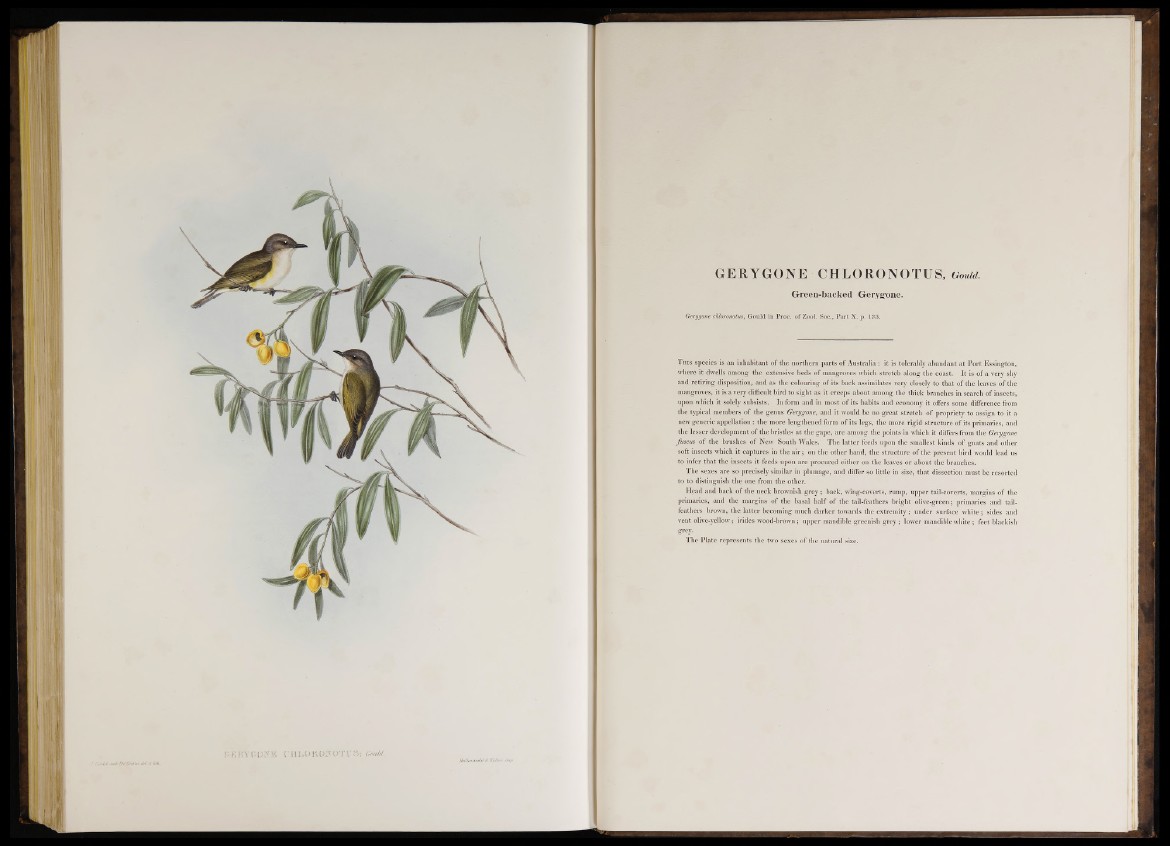
GERYGONE CHLORONOTUS, Gould.
Green-backed Geryg*one.
Gerygone chloronotus, Gould in Proc. of Zool. Soc., Part X. p. 133.
T h i s species is an inhabitant o f the northern parts of Australia: it is tolerably abundant at Port Essington,
where it dwells among the extensive beds o f mangroves which stretch along the coast. It is of a very shy
and retiring disposition, and as the colouring of its back assimilates very closely to that of the leaves of the
mangroves, it is a very difficult bird to sight as it creeps about among the thick branches in search o f insects,
upon which it solely subsists. In form and in most o f its habits and economy it offers some difference from
the typical members of the genus Gerygone, and it would be no great stretch o f propriety to assign to it a
new generic appellation: the more lengthened form of its legs, the more rigid structure o f its primaries, and
the lesser development of the bristles at the gape, are among the points in which it differs from the Gerygone
fuscus o f the brushes o f New South Wales. The latter feeds upon the smallest kinds o f gnats and other
soft insects which it captures in the air; on the other hand, the structure of the present bird would lead us
to infer that the insects it feeds upon are procured either on the leaves or about the branches.
The sexes are so precisely similar in plumage, and differ so little in size, that dissection must be resorted
to to distinguish the one from the other.
Head and back o f the neck brownish g r ey ; back, wing-coverts, rump, upper tail-coverts, margins o f the
primaries, and the margins of the basal half of the tail-feathers bright olive-green; primaries and tail-
feathers brown, the latter becoming much darker towards the extremity ; under surface white ; sides and
vent olive-yellow; irides wood-brown ; upper mandible greenish grey ; lower mandible white; feet blackish
grey.
The Plate represents the two sexes o f the natural size.